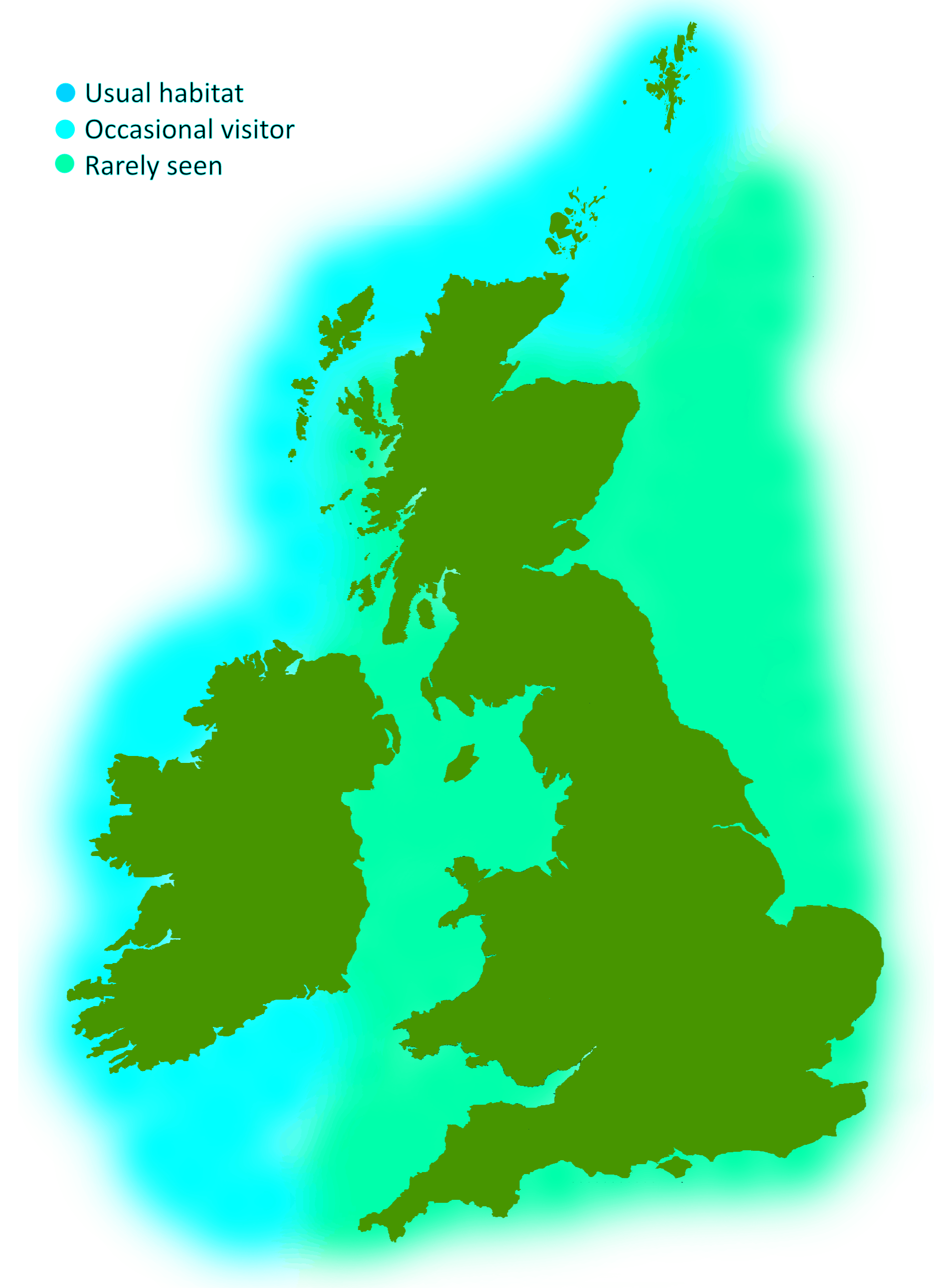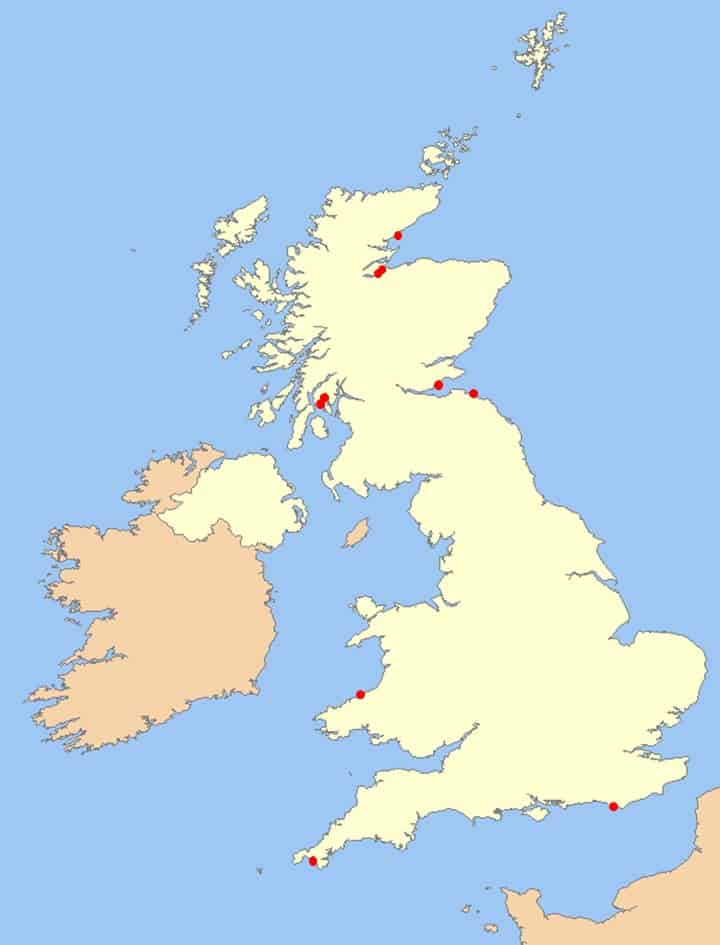
A pelagic whale measuring up to 5.5 metres, slim and torpedo-shaped, dorsally grey to brown, becoming paler ventrally. The small, swept-back dorsal fin lies two-thirds of the way along the back and they lack the median notch between the left and right tail flukes. A rounded forehead tapers to a long, slender, dark-tipped or all-dark beak (shorter in juveniles). Eyes are encircled by a dark patch. In adult males, two flattened triangular teeth protrude mid-way from the lower jaw and bodies can be battle-scarred. Females do not have teeth and do not battle, so have fewer scars. They capture their prey by suction feeding, using the throat grooves to quickly expand the oral cavity to suck prey into their mouths.
Gestation is 12 months, with calves born early in the year and measuring 2.4-2.7 metres.
These can be confused with dolphins. Sowerby’s live in groups of 3-10 individuals, feeding predominantly on small squid, molluscs and fish.
Sowerby’s beaked whales are a deep-diving species that favours habitats far offshore out at the edge of the continental shelf and beyond, where they can dive to over 2000m on a single breath in search of their favoured prey, squid.
They are found in the Atlantic from the sub-Arctic down to northern Africa. Sowerby’s beaked whales frequent offshore waters to the west of the UK and Ireland and are only usually seen from boats. It would be very unusual to see them from land.

Live strandings of Sowerby’s beaked whales are rare, but if found alive on the shore then it is almost certain that their health will already be seriously compromised. This is especially true for animals that have entered the North Sea, as they are a very long way from their normal habitat, will be unable to forage effectively, and are unlikely to find their way back out again.

A whale, dolphin or porpoise stranded on the beach is obviously not a usual phenomenon. These animals do not beach themselves under normal circumstances, and they will require assistance. Please DO NOT return them to the sea as they may need treatment and or a period of recovery before they are fit enough to swim strongly.
BDMLR RESCUE HOTLINE:
01825 765546 (24hr)
or
RSPCA hotline (England & Wales): 0300 1234 999
SSPCA hotline (Scotland): 03000 999 999
You will receive further advice over the phone, but important things you can do to help are:
If you find a dead cetacean
The Cetacean Strandings Investigation Programme (CSIP) collects a wide range of data on each stranding found on English and Welsh shores, whilst the Scottish Marine Animal Strandings Scheme (SMASS) does the same for Scotland. If you discover a dead animal, please contact the relevant hotline and give a description of the following where possible:
Digital images are extremely helpful to identify to species, as well as ascertaining whether the body may be suitable for post-mortem examination.
CSIP has produced a useful leaflet that can be downloaded by clicking here.
CSIP hotline (England and Wales): 0800 6520333.
SMASS hotline (Scotland): 07979245893.